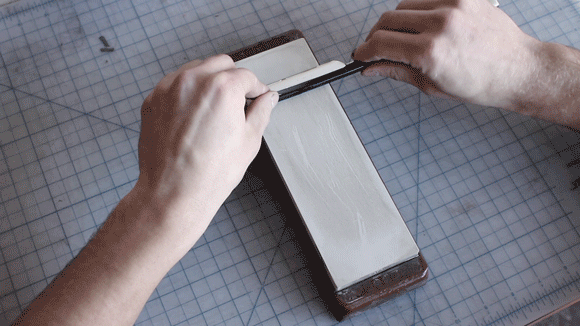PR Collaborators is a blog series highlighting hardworking individuals who help Portland Razor Co. be the best we can be. We consider the people and companies featured here to be integral to our success and hope our readers will show their support for these wonderful makers.
We met Rick Molitor of New Basin Distilling Co in 2015 via a chance encounter and, as one does over a dram of good American whiskey, we hatched an idea. Rick had just finished bottling a batch of Resignation Rye and needed to retire one of the Oregon white oak barrels used to age it. Though no longer useful for aging fine liquor, Rick hoped we might be able to turn it into something other than firewood. We happily obliged by making a limited set of co-branded Cascade Steel straight razors with unique engravings and scales which showed off the unique character of charred, rye-stained Oregon white oak. Rick has helped us over the years to raise funds and awareness for men’s health issues, supported our business by co-sponsoring events, and keeps our friends and clients happy with a steady flow of luxurious libations at the Portland Shave Shop.
Q: Tell our readers about your business. What do you do? What is your company story?
New Basin Distilling Company is a true Farm to Bottle distillery. We are proud to take our own farm grown grain and turn it into liquid magic. Our story started like any group of drinking buddies. It doesn't take long
Q: Is being in Oregon important to you and your business? Why/why not?
This is a catch 22 - we love Oregon. 3 of the 5 New Basin partners are multi-generational Oregonian. We have fertile fields for our grain production and the world's best water-Opal Springs water can't be beat for natural purity and flavor. Being 100% Distilled in Oregon is important to us. However, the business climate and tax structure for distilled spirits in Oregon is a huge obstacle for Oregon distilleries. The current tax structure on distilled spirits range from 31 to 51% of the listed price just in Oregon. With these numbers, along with local and Federal taxes we are starting to see distilleries close or move out of the State.
Q: What sharp things do you use (knives, razors, axes, etc) at work? What tools are your favorite to use?
We love the collaboration with Portland Razor with the creation of a razor with scales made from one of our Resignation Rye Whiskey barrels. This is the sharpest item I've carried in our tasting room.
Q: Do you straight shave? If not, would you consider it?
I have received many straight razor shaves but never shaved myself. Would love to learn!
Q: Where do you look for inspiration?
My son is currently attending OSU in the Food Science/Fermentation Studies Program. He has helped New Basin Distilling create more efficient and effective distilling procedures. I'm excited for younger distillers to challenge and change the landscape of what make a true American Whiskey.
Q: We love your product and are proud to serve it in our barbershop! In your own words, what’s better about it than its big-box store competitors?
You really can't compare locally grown, milled, mashed, fermented and distilled product. I can literally walk you into one of our rye and wheat field. Also, as stated above, naturally raw and untouched water from Opal Springs makes our whiskey that much better!
Q: What is the most “Portland” thing to ever happen to you?
Serving New Basin Distilling Cocktails at a Portland Fashion Week party!
Q: What is one thing you wish more of your customers knew about you or your work?
How passionate and true we are to making an amazing Farm-to-Bottle Oregon Whiskey!
Q: How can readers get in touch with you?
Get a bottle at your local liquor store, swing in the distillery at 2063 NW Andrews Dr. Madras, OR, 97741 give us a call at 541-980-4595, on the web at www.newbasin.com, follow us on Facebook @NewBasinDistilling or search #newbasindistilling










